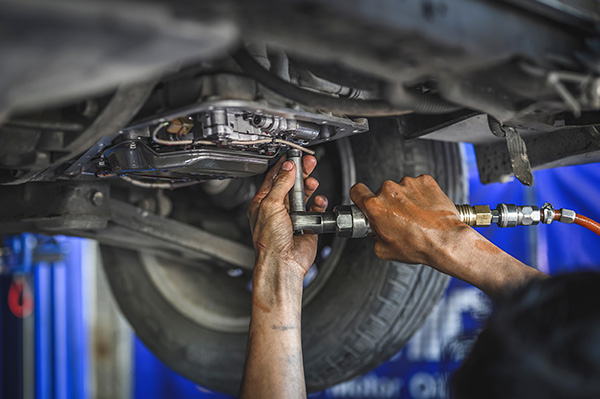
Your vehicle’s transmission fluid is one of the most important yet overlooked fluids under the hood. It plays a vital role in keeping your transmission cool, lubricated, and performing smoothly. Whether you drive an automatic or a manual transmission, regularly checking your fluid helps prevent costly repairs and ensures your vehicle shifts smoothly on the road.
If you’re not sure how to check transmission fluid or whether your vehicle even has a dipstick, here’s what every driver in Visalia should know.
What Transmission Fluid Does
Before learning how to check the level, it helps to understand what transmission fluid actually does. It keeps the gears inside your transmission moving smoothly, prevents overheating, and protects components from friction and wear.
Without enough clean fluid, the transmission can become sluggish, overheat, or even suffer internal damage. That’s why it’s crucial to make checking the fluid part of your routine car care.
Does Your Vehicle Have a Transmission Dipstick
The first step is to find out if your car allows you to check the fluid yourself. Some older and many domestic vehicles include a transmission dipstick, usually located near the engine bay. It’s often labeled or colored to stand out and can be accessed just like the oil dipstick.
However, many modern cars, especially European or luxury models, have sealed transmissions. These don’t come with a user-accessible dipstick. In these cases, checking the fluid level requires a professional technician using special equipment. If you’re unsure whether your vehicle has a dipstick, your owner’s manual or your service provider can help confirm.
How to Check Transmission Fluid (For Cars With a Dipstick)
If your vehicle has a dipstick for the transmission, the process is simple but must be done correctly:
- Park on a level surface. Make sure your car is on flat ground and the parking brake is engaged.
- Warm up the engine. Most manufacturers recommend checking the fluid while the engine is running and warmed up. Shift through all gears with your foot on the brake, then leave it in park or neutral.
- Locate the dipstick. Open the hood and find the transmission fluid dipstick—don’t confuse it with the engine oil dipstick.
- Pull and wipe. Remove the dipstick, wipe it clean with a rag, and reinsert it fully.
- Check the level. Pull it out again and check where the fluid reaches in relation to the full mark. The fluid should be within the recommended range.
- Inspect the fluid condition. Transmission fluid should be bright red or pink and smell clean. If it’s dark, dirty, or has a burnt odor, it’s time for a fluid service.
What If the Level Is Low
If the fluid level is low, you can add the correct type of transmission fluid through the dipstick tube. It’s very important to use the fluid specified for your vehicle—different types are not interchangeable. Add a small amount at a time and recheck the level after each addition to avoid overfilling.
Low fluid levels often indicate a leak, as transmission fluid typically does not evaporate or get consumed like engine oil. If you see puddles under your car or have to refill often, it’s best to have it inspected by a technician.
What If Your Car Doesn’t Have a Dipstick
For vehicles without dipsticks, checking transmission fluid isn’t a DIY task. These cars use sealed systems that must be checked from underneath, usually by removing a plug and measuring the fluid with the engine running at a specific temperature.
This process requires the right tools and knowledge, which is why a repair shop best handles it. At DS Auto Experts in Visalia, we have the diagnostic equipment and expertise to check and refill sealed systems safely.
When Should You Check the Fluid
For most cars, checking transmission fluid once every few months or at each oil change is a good habit. If you notice symptoms like slipping gears, hesitation when shifting, or strange noises from the transmission, check the fluid immediately.
You should also check it before long trips, especially in hot weather, since high temperatures can put extra strain on the transmission system.
Stay Ahead With Regular Transmission Maintenance
Regular fluid checks help keep your transmission running smoothly, but they aren’t a replacement for full fluid services when needed. Over time, transmission fluid breaks down and loses its protective qualities. Following your manufacturer’s service schedule helps prevent costly issues down the road.
If you’ve never checked your transmission fluid or if your car has a sealed system, let the professionals handle it. At DS Auto Experts, we help Visalia drivers take care of their vehicles with precision and care. Our technicians can check fluid levels, inspect for leaks, and recommend the right time for a fluid change.
Stop by today and let us help you keep your transmission and the rest of your vehicle in top condition. Proper maintenance now means fewer surprises later.